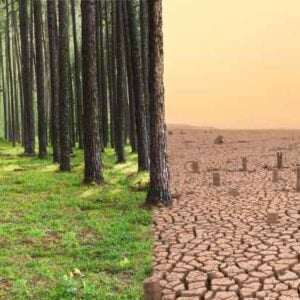Small Island Developing States (SIDS), which contribute less than one per cent of global greenhouse gas emissions, face catastrophic climate-related losses of up to $476 billion by 2050 if urgent adaptation measures are not implemented, according to a new report by the Global Commission on Adaptation (GCA). Rising seas, stronger storms, saltwater intrusion, and collapsing fisheries threaten the livelihoods and food and water security of communities across these 39 island nations scattered throughout the Caribbean, Pacific, and Indian Oceans. Hilda Heine, president of the Marshall Islands, highlighted that existing climate finance mechanisms often exclude SIDS due to complex eligibility rules and risk standards, leaving them unable to access critical support despite the high cost-effectiveness of adaptation interventions.
The report underscores that many SIDS are grappling with severe financial constraints, with over 70 per cent showing signs of debt stress or looming debt crises. Seven countries are already nearing “debt distress” with debt-to-GDP ratios exceeding 100 per cent, and eight more are classified as highly indebted. This financial fragility limits their ability to invest in resilience, capacity-building, and adaptation programs essential for protecting people and economies. Currently, these nations receive only $2 billion annually in international public climate finance for adaptation—just 0.2 per cent of global climate funding—and most of it is concentrated in just 10 countries, leaving the remainder with insufficient support.
The GCA calls for a six-fold increase in adaptation financing to $12 billion annually, aligning with national adaptation plans and climate commitments of SIDS. Analysis of six island states—the Comoros, Maldives, Mauritius, Fiji, the Marshall Islands, and Barbados—indicates that every dollar invested in adaptation could yield up to $6.50 in avoided damages and economic growth. Investments in water management, transport infrastructure, clean energy, and climate-smart agriculture could cut climate-related losses by more than half by mid-century.
Despite the daunting challenges, examples from the region provide hope. Vanuatu is scaling up solar-powered water pumps and climate insurance schemes, the Marshall Islands has installed solar arrays powering schools and community centers, the Dominican Republic is restoring mangroves to buffer storm surges, and Bermuda has introduced 70 electric buses saving $500,000 annually in fuel costs. Improving water systems is particularly cost-effective, as SIDS currently lose nearly half of their water to inefficiencies, compared with under 30 per cent in well-performing utilities. Nature-based solutions such as reef and mangrove restoration are also highly efficient, delivering benefits up to five times greater than their costs while protecting tourism and fisheries, two key economic pillars.
The report recommends a comprehensive strategy that links adaptation finance, debt relief, and institutional capacity to transform vulnerability into resilience. Closing the grant deficit, integrating adaptation measures into national budgets, and leveraging de-risking and blended finance mechanisms to attract private investment are key steps. Innovative fiscal tools, including debt-for-nature and debt-for-climate swaps, can further connect relief to resilience outcomes. Patrick Verkooijen, CEO of the GCA, emphasized that investing in adaptation provides substantial returns across sectors, ensuring energy systems, transport networks, water infrastructure, and food systems can withstand climate shocks while generating long-term economic and social benefits.






